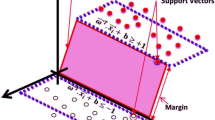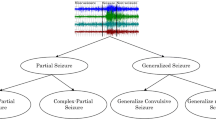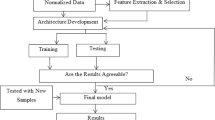Abstract
This paper approaches an intellectual diagnosis system using hybrid approach of Adaptive Neuro-Fuzzy Inference System (ANFIS) model for classification of Electrocardiogram (ECG) signals. This method is based on using Symlet Wavelet Transform for analyzing the ECG signals and extracting the parameters related to dangerous cardiac arrhythmias. In these particular parameters were used as input of ANFIS classifier, five most important types of ECG signals they are Normal Sinus Rhythm (NSR), Atrial Fibrillation (AF), Pre-Ventricular Contraction (PVC), Ventricular Fibrillation (VF), and Ventricular Flutter (VFLU) Myocardial Ischemia. The inclusion of ANFIS in the complex investigating algorithms yields very interesting recognition and classification capabilities across a broad spectrum of biomedical engineering. The performance of the ANFIS model was evaluated in terms of training performance and classification accuracies. The results give importance to that the proposed ANFIS model illustrates potential advantage in classifying the ECG signals. The classification accuracy of 98.24 % is achieved.














Similar content being viewed by others
References
S.C.Sexena,V.Kumar, S.T.Hamde,,“Feature Extraction from ECG signals using wavelet transforms for disease diagnostics”, International Journal of Systems Science, Vol.33, Issue 13, 2010.
Bhyi C, Hamde ST, Waghmare LM, “ECG Feature Extraction and disease diagnosis”, Journal of Medical Engineering and Technology”, pp.354–361, 2011.
Soroor Behbahani, “Nader Jafarnia Dabanloo, Ali Motoe, Nasrabadi, Cesar A. Teixeira & Antonio Dourad,“A new algorithm for detection of epileptic seizures based on HRV signal”, Journal Of Experimental & Theoretical Artificial Intelligence, pp.1–17.
Pan, J., and Tompkins, W. J., A real-time QRS detection algorithm. IEEE Transactions on Biomedical Engineering 32:230–236, 1985.
Hamilton, P. S., and Tompkins, W. J., Quantitative investigation of QRS detection rules using the MIT/BIH arrhythmia database. IEEE Transactions on Biomedical Engineering. 33:1157–1165, 1986.
Li, C., Zheng, C., and Tai, C., Detection of ECG characteristic points using wavelet transform. IEEE Transactions on Biomedical Engineering 42(1):8–21, 1995.
Zhao, Q., and Zhang, L., ECG feature extraction and classification using wavelet transform and support vector machines. IEEE Transactions on Biomedical Engineering 23:1089–1092, 2005.
L. Lee,K.L. Park,M.H. Song and K.J. Lee, “Arrhythmia classification with reduced features by linear discrimination anlysis”, IEEE Engineering in Medicine & Biology Society,27th Annual International Conference, pp. 1142–1144, 2005.
Louis C Pretorius and Cobus Nel, “Feature Extraction From ECG for Classification By Artificial Neural Network”,University of Pretoria, In IEEE Proceeding, pp.67–70, 2002.
Branimir B. Jovanovic, Irini S. Reljin, and Branimir D. Reljin., Modified ANFIS Architecture – Improving Efficiency of ANFIS Technique”, 7th Seminar on Neural Network Applications in Electrical Engineering, university of blgrade, Serbia and Montenegro,pp.215–220, 2004.
D. Mokeddem, A. Khellaf, July, “Design of a Fuzzy Controller for pH Using Genetic Algorithm,” International Review on Computers and Software,Vol. 2. no. 4, pp. 318–324, 2007.
Afonso, X., Tompkins, W. J., Nguyen, T. Q., and Luo, S., ECG beat detection using filter banks. IEEE Transactions on Biomedical Engineering 46(2):192–202, 1999.
M.l. Talbi,A. Charef.,“PVC discrimination using the QRS power spectrum and self –organizing maps”, Science Direct, Computer Methods and programs in medicine, pp 45–52, 2009.
Emran M. Tmil,Nor Hafeezah Kamarudin, “Heartbeat Elecrocardiogram signal feature extraction using discrete wavelet transform”,in Proceedings of CSPA.1112–1117, 2009.
S. Z. Mahmoodabadi, A. Ahmadian, M. D. Abolhasani, M. Eslami, J. H. Bidgoli1., 2005, “ECG Feature Extraction Based on Multiresolution Wavelet Transform,” IEEE Engineering in Medicine & Biology Society, 27th Annual International Conference, pp. 1142–1144.
Anuradha, B., Suresh Kumar, K., and Veera Reddy, V. C., Cardiac arrhythmia classification fuzzy clasifiers. Journal of Theoretical and applied Information Technology 4:353–358, 2008.
Benali, R., and Chikh, M. A., Neuro-fuzzy classifier classifier for cardiac arrhythmias recognition. Journal of Theoretical and applied Information Technology 4:577–582, 2009.
Kannathal N. Sadasivan K Puthusserypady, “Cardiac State Diagnosis using Adaptive Neuro-Fuzzy Techniqu”, Proceedings of theIEEE Engineering in Medicine and Biology 27th Annual Conference Shanghai, China, pp.38643867, 2005.
I. Daubechies., “The Wavelet Transform, Time-Frequency Localization and Signal Analysis”, IEEE Trans. Inform. Theory, pp.961–1005, 1990.
Sumathi, S., and Sanavullah, M. Y. Dr., “Comparative Study of QRS Complex Detection in ECG Based on Discrete Wavelet Transform”. International Journal of Recent Trends in Engineering 2(5):273–277, 2009. November.
Jang Roger, J. S., ANFIS-Adaptive-network-based fuzzy inference systems. IEEE Transactions on Systems, Man, and Cybernetics 20(3):665–685, 1993.
Jang Roger JS,“Self-learning fuzzy controllers based on temporal backpropogation”,IEEE Transactions on Neural Networks,pp.714–723, 1992.
MIT-BIH (http://www.physionet.org).
Author information
Authors and Affiliations
Corresponding author
Additional information
This article is part of the Topical Collection on Patient Facing Systems.
Rights and permissions
About this article
Cite this article
Sumathi, S., Beaulah, H.L. & Vanithamani, R. A Wavelet Transform Based Feature Extraction and Classification of Cardiac Disorder. J Med Syst 38, 98 (2014). https://doi.org/10.1007/s10916-014-0098-x
Received:
Accepted:
Published:
DOI: https://doi.org/10.1007/s10916-014-0098-x




